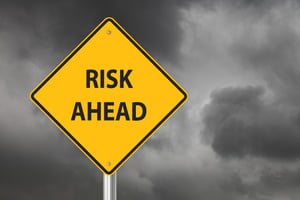Preparation is critical in providing timely severe weather mass alerts when every second counts. As hurricanes shift paths, floods threaten lives and property, and wildfires appear out of nowhere, pre-defined templates will help you quickly reach those in need.
The Increasing Risk of Severe Weather
Natural disasters have always posed a threat, but these weather events are occurring more frequently and with greater strength. Regardless of where you are located in the United States or across the globe, your organization or institution will likely encounter severe weather of some kind at some point in time.
Inclement weather can not only disrupt business continuity, but it can also put lives at risk. It is important to examine the role of critical communications when it comes to natural disasters. In order to best protect your people, you must evaluate emergency communication strategies and resources.
Mass Notification and Mass Alert Systems
Using predefined messages and automated workflows will save time and enable weather alerts to be more effective during an actual crisis. With a mass notification system in place, you are able to draft templates in advance and save them for when a weather emergency does occur. It is best to set up and test the emergency notification system BEFORE any indication of inclement weather.
In the case of an imminent threat, such as a hurricane, flash flooding, wildfire, damaging wind, large hail, or other inclement weather, administrators cannot rely on single points of contact to relay natural disaster warnings. If your power is wiped out by a natural disaster, you won’t be able to send those emergency notifications that your community needs without a cloud-based, multi-channel communications approach. Your emergency communication system should include multiple channels, including SMS text message mass alerts, voice messages, emails, mobile safety app push notifications, social media posts, etc.
Weather Mass Alert Templates
As an example, in the case of an earthquake, you will want to send out a message through multiple critical communication channels to ensure everyone is reached. You will also want to modify the message based on the communication channel. While email and voice call messages can be generally the same, mass text messages should not be more than 160 characters, including spaces. Here are some sample templates:
- Text Message Mass Alert: An earthquake has occurred. Evacuate all {Organization/Institution Name} buildings and remain outside until further notice.
- Emergency Email Message: An earthquake has occurred. Evacuate all {Organization/Institution Name} buildings and remain outside until further notice. For additional information and updates go to {Emergency Website Address}.
- Voice Phone Call: This is {name, title} with a mass alert from {Organization/Institution Name}. An earthquake has occurred. Evacuate all {Organization/Institution Name} buildings and remain outside until further notice. For additional information and updates go to {Emergency Website Address}.
At the push of a button, you can then notify everyone of the impending danger and provide them with prompt instructions. Two-way communication can also be utilized for welfare checks and headcounts. When the danger has passed, you can then send an "all clear" mass alert to resume normal operations.
Mass Alert Best Practices and Takeaways
When drafting the templates, the intent is not to incite panic, but rather to clearly communicate with those at potential risk. The messages should be informative in nature, providing your constituents with relevant instructions and resources.
The safety experts at Margolis Healy suggest each message consist of the following three components:
- Alerting (attention management) – Calling the user’s attention to the issue at hand
- Informing (information transfer) – What is happening and what the user should and should not do
- Reassuring (emotional payload) – The degree of sensitivity as to the audience
The key takeaway is to ensure critical messages are already in the queue in preparation for a potential severe weather event. Pre-written and pre-approved mass notifications save time, ensure clear communications, and prevent panic.
Omnilert customers receive access to a comprehensive template library through our support portal. We also crafted some templates that can be added right now to your emergency communications plan.

